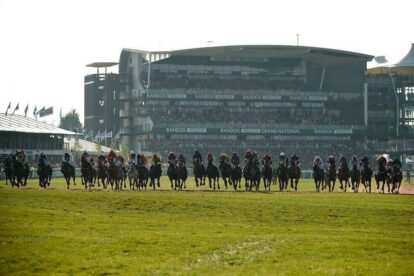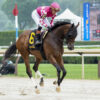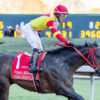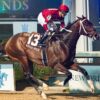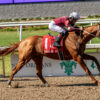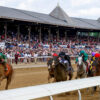The Grand National is the UK’s biggest annual horse racing event. It takes place at Aintree Racecourse in Liverpool over a period of three days in early April, usually from Thursday to Saturday.
Being one of the world’s oldest horse races, the Grand National stands in a class of its own, both for the drama it has produced over the years and for the masses of people across the globe who tune in each year. And its popularity, in part, is down to the sheer difficulty of the race.
Below, we’ll explore the Grand National in more detail, discussing what makes it unique and special, before considering some betting tips that you can keep in mind when next you back a horse in the race.
What is the Grand National?
The first Grand National took place 183 years ago, in 1939. The race is run over a distance of a little over four miles. However, what makes the National unique is that it’s a steeplechase – horses must jump 30 fences over two laps to complete the race.
The Grand National also offers the most lucrative payout in European horse racing, with a prize fund of £1m.
The popularity of the race cannot be denied. It’s estimated that each year, around 500 to 600 million people tune in from over 140 countries, which makes it one of the most watched sporting events.
In 2021, the winning horse was Minella Times.
What makes the Grand National special?
The standout feature of the Grand National is the steeplechase aspect of it. Horses and their jockeys must complete 30 jumps over two laps. But the jumps at Aintree racecourse can be tough.
The fences in the National are much larger than those on traditional National Hunt tracks. Although they’re made of less damaging material (usually pine branches), the distances that need to be cleared make them difficult. So too are the sharp turns after some jumps, as well as the need to clear water.
Some of the most famous fences at Aintree include The Chair, Canal Turn and Becher’s Brook.
Canal Turn, for example, is well-known for its sharp, 90-degree turn that the horses must take right after the jump. This creates the risk of jockeys becoming unbalanced.
Another tough fence is The Chair. It’s the tallest fence on the course, at 5 feet 3 inches tall, with an open ditch six feet in length standing before it. This fence usually claims the most fallers.
These different aspects to the National help to create intrigue and are why the race has become embedded in UK culture. Many people who never watch horse racing will place a bet on Grand National day, whether via online sports betting or at their local bookies.
Betting tips for the Grand National horse race
Picking the winning horse for the Grand National is a difficult thing to do. In the last few years, the title has been claimed by some rank outsiders.
Back in 2013, Auroras Encore stole victory at odds of 66/1. The year before, Neptune Collonges won at 33/1. In 2014 and 2015, horses backed at 25/1 won, and in 2016, Rule The World claimed victory at odds of 33/1. Last year’s winner, Minella Times, had odds of 11/1.
As you can see, pretty much anyone could win the National, and that’s what makes it exciting.
With that being said, there are a few things you can do to give yourself a better chance of winning.
Check form
One of the most sensible things you can do when researching a racing bet is to check the form of each horse.
If you know a particular horse has won or performed well in the last few races, then you can feel a bit more confident in their chances coming into the National.
You could also check their performance in big race meets. Horses can feel nerves and anxiety, as can their jockeys. If they’re new to the big stage, it might overwhelm them.
See which horses are best at jumping
The notable feature of the National isn’t just the fact that horses have to jump, it’s the number of jumps that they have to overcome.
It’s therefore wise to keep an eye out for horses that are used to jumps and steeplechases. If they’re not, it may prove too much, with the risk of them falling and your bet going down the drain.

